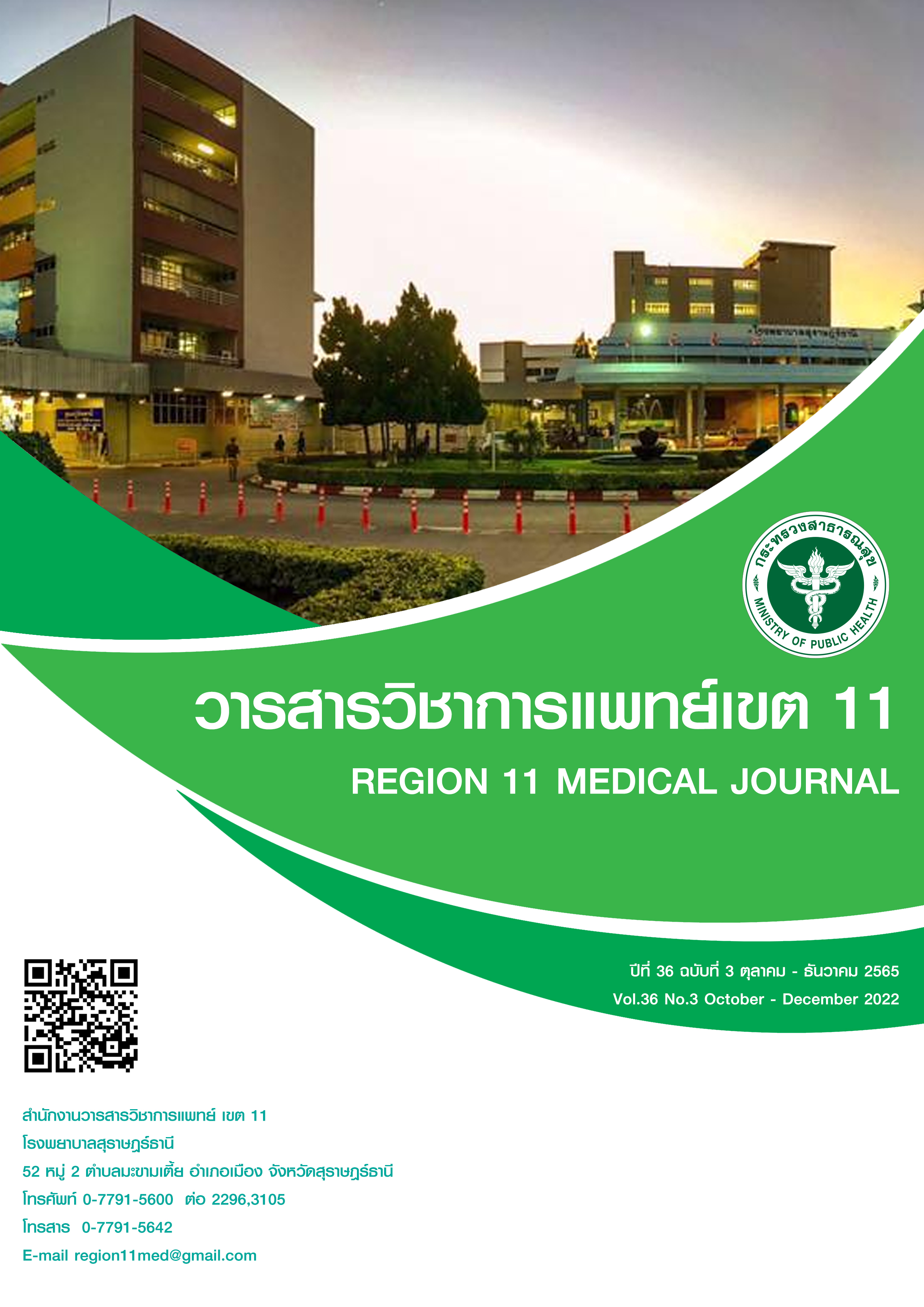The effects of additive intrathecal fentanyl on time to first analgesic requirement in unilateral inguinal hernia surgery
Keywords:
Inguinal herniorrhaphy, Spinal anesthesia, Intrathecal FentanylAbstract
Background: Spinal anesthesia has been found to be commonly technique for inguinal hernia surgery because it is easy to perform, provides fast onset of action, effective blockage of sensory and motor in awake patient and useful for reduce postoperative pain. Bupivacaine was local anesthetic that frequently used in spinal anesthesia, when it is combined with Fentanyl can produce synergestic effect and prolonging duration of sensory block without sympathetic block or delaying recovery.
Objectives: The aim of prospective study is to compare effectiveness of Fentanyl combined in hyperbaric bupivacaine with hyperbaric bupivacaine alone in spinal anesthesia for inguinal herniorrhaphy.
Method: The study designed was prospective, randomized, double blinded controlled study. Patients were randomly divided two groups of 22 each. Group BF received 0.5% hyperbaric bupivacaine 10 mg and Fentanyl 25 µg for spinal anesthesia. Group B received 0.5% hyperbaric intrathecal Bupivacaine 12.5 mg. Parameter such as level of sensory and motor blockage were assessed. Duration of full sensory or motor recovery, postoperative pain score and time to first analgesia requirement were recorded. Side effects produced during perioperative and postoperative period were observed and noted.
Results: No significant difference were observed in time to first analgesic requirement (group BF = 450.41 ± 250.13 min, group B = 400.50 ± 209.55 min, P = 0.477). Patients in group BF were faster recovery of motor and sensory function (recovery of motor block group BF = 209.05 ± 52.63 min VS group B = 281.73 ± 115.86 min, P=0.012 recovery of sensory block group BF = 247.73 ± 58.89 min VS group B = 327.41 ± 110.81 min, P=0.005). The common adverse effects after spinal injection were hypotension, bradycardia and urinary retention but no significant differences in both groups.
Conclusion: Bupivacaine in combination with Fentanyl has returned of motor function faster than Bupivacaine alone but not extending time of first postoperative analgesic requirement after spinal anesthesia for inguinal herniorrhaphy.
References
Manish B, Kanchan R, Prashant S. Comparison between high dose hyperbaric Bupivacaine (12.5 mg) alone versus low dose hyperbaric Bupivacaine (7.5mg) with Fentanyl (25µg) in spinal anesthesia for inguinal hernia surgery. International Journal of Clinical Trials. 2016;3:140-6.
Leighton BL DeSimone CA, Norris MC, Ben-David B. Intrathecal narcotics for labor revisited: the combination of fentanyl and morphine intrathecally provides rapid onset and profound, prolonged analgesia. Anesth Analg 1989; 69: 122-5.
Rueben SS, Dunn SM, Dupart KM, O'Sullivan P. An intrathecal fentanyl dose-response study in lower r revascularization procedures. Anesthesiology 1994; 81: 1371-5.
Singh H, Yang J, Thornton K, Giesecke AH. Intrathecal fentanyl prolongs sensory Bupivacaine spinal block. Can J Anaesth. 1995;42(11):987-91.
Sundnes KO, Vaagenes P, Skretting P, et al. Spinal analgesia with hyperbaric bupivacaine: Effect of volume of solution. Br J Anesth. 1982;54:69.
Hunt CO, Naulty JS, Bader AM, et al. Perioperative analgesia with subarachnoid fentanyl-bupivacaine for cesarean delivery. Anesthesiology 1989; 71: 535-40.
Belzarena SD. Clinical effects of intrathecally administered fentanyl in patients undergoing cesarean section. Anesth Analg 1992; 74: 653-7.
Ben-David B, Levin H, Solomon E, Admoni H, Vaida S. Spinal Bupivacaine in Ambulatory Surgery: The Effect of Saline Dilution Anesth Analg. 1996;83:716-20.
Song D, Greilich NB, White PF, Watcha MF, Kendall. Recovery profiles and costs of anesthesia for outpatient unilateral inguinal herniorrhaphy. Anesth Analg. 2000;91:876-81.
Sheskey MC, Rocco AG, Bizzarri-Schmid M. A dose response study of Bupivacaine for spinal anaesthesia. Anesth Analg. 1983;62:931-5.
Kuuniemi KS, Kalevi K, Pitkanen MT. The Use of Bupivacaine and Fentanyl for Spinal Anesthesia for Urologic Surgery. Anesth Analg. 2000;91:1452-6.
Celasin H, Afandiyev F, Culcu S. Factors that predict urinary retention in patients who underwent inguinal hernia repair. Int Surg J. 2020 Nov;7(11):3735-3739.
Mulroy M. Effect of short acting spinal and epidural anaesthesia on voiding. Anaesthesiology. 2002;97:315-9.
Artawan IM, Sarim BY, Sagita S. Comparison the effect of preloading and coloading with crystalloid fluid on the incidence of hypotension after spinal anesthesia in cesarean section. Bali J Anaesthesiol. 2020;4:3-7.
Bourke DL, Sprung J, Harrison C. High injection speed overwhelms other maneuvers for controlling the spread of spinal anesthesia. Anesth Analg. 1995;81:424-35.
Downloads
Published
How to Cite
Issue
Section
License
Copyright (c) 2022 Region11Medical Journal

This work is licensed under a Creative Commons Attribution-NonCommercial-NoDerivatives 4.0 International License.






